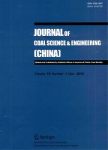版权所有:内蒙古大学图书馆 技术提供:维普资讯• 智图
内蒙古自治区呼和浩特市赛罕区大学西街235号 邮编: 010021

作者机构:Chemical Engineering and Process Development DivisionCSIR-National Chemical LaboratoryDr.Homi Bhabha RoadPashanPune 411008India Chemical Engineering DepartmentAll India Shri Shivaji Memorial Society's College of Engineering (AISSMSCOE)Kennedy RoadPune 411001India Savitribai Phule Pune University (SPPU)Ganeshkhind RoadPune 411007India Combustion Science and TechnologyCSIR-Central Institute of Mining and Fuel Research (CIMFR)Dhanbad 826015India Mineral TechnologyCSIR-Central Institute of Mining and Fuel Research (CIMFR)Dhanbad 826015India
出 版 物:《International Journal of Coal Science & Technology》 (国际煤炭科学技术学报(英文))
年 卷 期:2018年第5卷第4期
页 面:486-507页
核心收录:
基 金:Bangladesh Council of Scientific and Industrial Research BCSIR
主 题:Ash fusion temperature Artificial neural networks Support vector regression Genetic programming Data-driven modeling
摘 要:In the coal-based combustion and gasification processes, the mineral matter contained in the coal (predominantly oxides), is left as an incombustible residue, termed ash. Commonly, ash deposits are formed on the heat absorbing surfaces of the exposed equipment of the combustion/gasification processes. These deposits lead to the occurrence of slagging or fouling and. consequently, reduced process efficiency. The ash fusion temperatures (AFTs) signify the temperature range over which the ash deposits are formed on the heat absorbing surfaces of the process equipment. Thus, for designing and operating the coal-based processes, it is important to have mathematical models predicting accurately the four types of AFTs namely initial deformation temperature, softening temperature, hemispherical temperature, and flow temperature. Several linear/nonlinear models with varying prediction accuracies and complexities are available for the AFT prediction. Their principal drawback is their applicability to the coals originating from a limited number of geographical regions. Accordingly, this study presents computational intelligenee (CI) based nonlinear models to predict the four AFTs using the oxide composition of the coal ash as the model input. The CI methods used in the modeling are genetic programming (GP), artificial neural networks, and support vector regression. The no table features of this study are that the models with a better AFT prediction and generalization performanee, a wider application potential, and reduced complexity, have been developed. Among the Ci-based models, GP and MLP based models have yielded overall improved performanee in predicting all four AFTs.